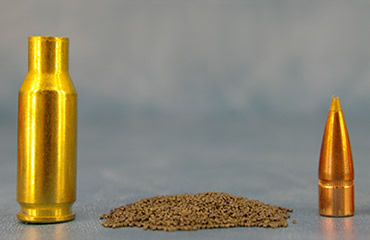You should shoot a variety of ammunition from your rifle or shotgun to see which works best in your particular gun. Just because a particular brand and grain size works for your buddy doesn't mean it will work well in your gun.
Once you have found a bullet design and brand that suits your style of hunting, make sure you sight in with the same brand, bullet design and bullet weight that you will be using when hunting. Changing any of those three variables can cause a shift in where your gun shoots.
I shoot Federal Premium ammunition, which costs more than standard bullets but is loaded to very fine tolerances. In fact, premium ammo is the next best thing to hand-loading your own ammunition, which I don't have the time or inclination to do.
Several companies now make premium ammunition, and it's worth the added cost. is a small part of deer hunting, and most hunters shoot fewer than two boxes of cartridges each year. That includes sighting-in, practice and hunting.
It is particularly important for hunters who travel long distances to make sure you have at least two boxes of ammo with you. You never know when your rifle might take a lick that knocks it out of sync, and it might take several shots to get the rifle back to form. If you’re out hunting in the boonies, the local hardware store might not carry your brand of ammunition.
Some hunters prefer a fast, light bullet and others like a heavy bullet that moves a little slower. They will all take deer. For hunting mature bucks -- deer heavier than 200 pounds -- I'd recommend a minimum of 130-grain bullets. As long as you stick with a well-designed bullet and concentrate on making a good first shot, you won't have many problems.
Read Recent Tip of the Week:
• Real-World Calling is Less Aggressive: As fun as it is to watch on TV, mashing antlers together like thunder and playing a grunt call like a flute are not the best tactics for most hunters after a trophy buck.




.png)